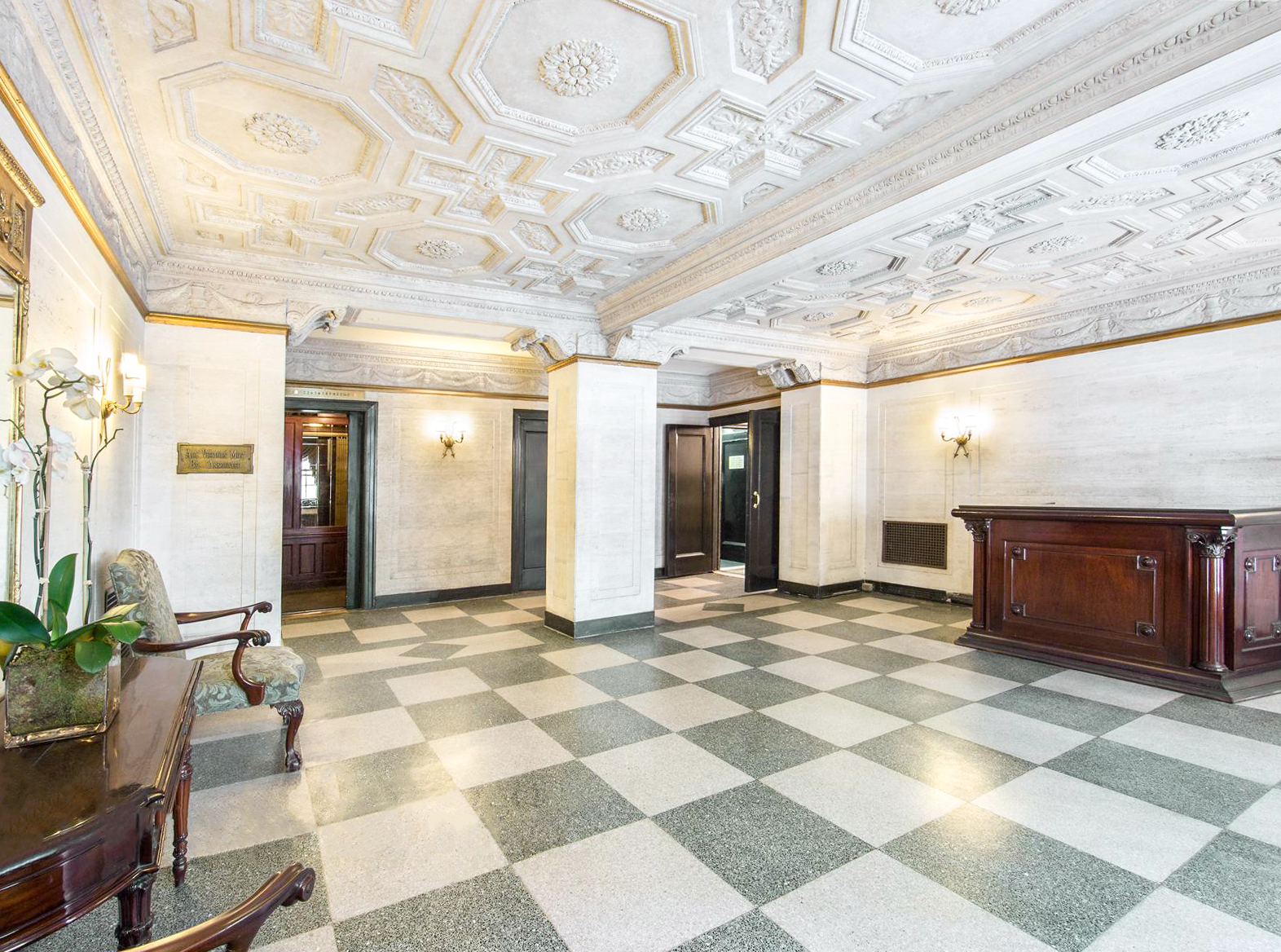
Prewar Elegance: Rosario Candela’s Lasting Influence on New York City
Every day, New Yorkers walk past a legacy apartment building—think “prewar,” think “classic six”—but they probably don’t realize that dozens of these gracious edifices were designed by the same architect, an Italian immigrant named Rosario Candela (1890-1953). Built primarily during the 1920s, Candela’s towers—such as the red-brick, Colonial Revival 12 E. 88th Street—quickly became a defining feature of the city’s toniest neighborhoods.

Even today, his name remains a distinctive selling point.
“More than just an architectural story, Candela and his work represents a story of social and urban transformation,” says Donald Albrecht, the curator of “Elegance in the Sky: The Architecture of Rosario Candela,” on view through Oct. 28 at the Museum of the City of New York. “He actually designed more buildings on the Upper West Side, but the exhibition concentrates on the Upper East Side residences because of the New York elite who called them home, people like John D. Rockefeller, Jacqueline Kennedy Onassis, and Mrs. [Brooke] Astor.”
The architect, for example, almost single-handedly transformed Fifth Avenue from a boulevard lined with stately mansions to an unbroken wall of skyscraper manses. He also gifted Park Avenue with a similar status during the building boom that emerged as the street’s train tracks were decked over. And, he helped conceive of Sutton Place, expanding what had been a tucked-away row of brownstones into a larger enclave of luxury towers, four of which he designed.

Candela came to the United States from Sicily to study architecture as a young man, graduating from Columbia University in 1915. Within five years, he had established his own practice and soon the development community, many of whom were also Italian immigrants, came calling. As the exhibition illustrates—via floorpans and marketing materials culled from the museum’s collections—Candela and the people who hired him thought carefully about how to introduce a new way of living to their wealthy clients.
“Their ads and brochures pointed out some of the advantages,” Albrecht says, “such as river and park views from high up and the organizational structure of the co-op itself, which was a fairly new concept at the time and allowed the owner to buy shares of their home while exercising control over just who their neighbors were. There’s that extra whiff of exclusivity. At the same time, they were showing potential buyers how the apartments still can feel like a house, with a clear separation between public and private spaces.”
Of course, with their steel-construction and sheer massing, the towers brought with them an extra appeal: the sheen of modernity. But while most of Candela’s buildings feature rather restrained exteriors, they also contain happy surprises. The red-brick 41 Fifth Avenue in Greenwich Village, for instance, includes Florentine-inspired motifs from his native Italy. And in a series of towers on Park Avenue, he fashioned elaborate terraced setbacks out of over-the-top compositions of pediments, pavilions, and bay windows that read, observes Albrecht, “like Italian hill towns in the sky.”

Always, though, it was in his masterful approach to space-planning that the architect really stood out. This two-bedroom co-op at 1105 Park Avenue is typical of his well-considered floor plans. “Typically, you walk into a spacious foyer that visually orients you to the main rooms—the library, the living room, the dining room—that come off of it,” Albrecht says. “Then there’s usually a separate corridor leading to the bedroom area.” Another characteristic innovation, continues Albrecht, was Candela’s “ingenious introduction of duplex and even triplex units into the mix.” Higher ceilings, thicker walls, larger windows—all were Candela signatures, too.
Although it wasn’t until the 1970s that architects, critics, and realtors began to link Candela to his multitude of buildings, the co-ops that he designed continued to lead real estate sales from the 1920s through today, 65 years after his death. “There’s an urbanist quality to his life, as well as an architectural one,” Albrecht says. “A practical one along with an artistic one. Those fusions have had real and lasting impact on the shape of the city.”




